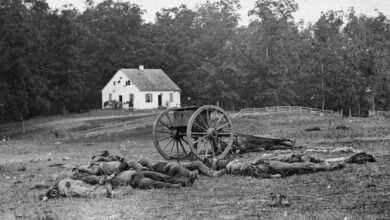The War of the Spanish Succession
The dawn of the 18th century marked one of Europe’s most complex and consequential conflicts — The War of the Spanish Succession. Often overshadowed by later global wars, this 13-year struggle set the stage for shifting alliances, dynastic drama, and battlefield innovations that rippled across Europe and beyond. Though it might lack the household recognition of Waterloo or the World Wars, the War of the Spanish Succession reshaped borders, crowns, and colonial empires, making it a defining episode in European history.
The Spark: A Royal Succession Crisis
It all began with a death — as many royal conflicts do. In 1700, Charles II of Spain, the last Habsburg king of the vast Spanish Empire, died without an heir. His reign had been fraught with poor health and political instability, but his passing left Europe with a dangerous vacuum of power. The Spanish Empire at the time wasn’t just Spain — it encompassed vast territories in Europe, the Americas, and parts of Asia. Whoever controlled Spain’s throne held enormous influence over global politics.
Charles II, under pressure from competing European powers, had named Philip of Anjou, grandson of France’s King Louis XIV, as his successor. This raised immediate alarms. If France and Spain united under the same Bourbon dynasty, it would tilt the balance of power sharply in France’s favour — an outcome the rest of Europe wasn’t about to accept quietly.
The Players: Europe’s Great Powers Take Sides
The potential Franco-Spanish union set off a diplomatic frenzy. A Grand Alliance formed to oppose Louis XIV’s growing ambitions. The coalition included:
- England (soon to become Great Britain after the 1707 Acts of Union)
- The Dutch Republic
- The Holy Roman Empire, under the leadership of the Austrian Habsburgs
- Various German and Italian states
Their goal? Prevent the unification of the French and Spanish thrones and curb Louis XIV’s territorial appetite.
On the opposing side stood France and Spain, led by Philip V, the newly crowned Bourbon king. The war wasn’t just fought across Europe — battles and skirmishes erupted in North America (known as Queen Anne’s War), the Caribbean, and even parts of South America, marking one of the first truly global conflicts.
The Battles: From Blenheim to Barcelona
The War of the Spanish Succession saw some of the most significant military clashes of the early 18th century, often characterised by large, disciplined armies manoeuvring across vast battlefields and employing evolving siege and battlefield tactics.
One of the most famous victories came at the Battle of Blenheim in 1704. Here, Anglo-Dutch forces led by the brilliant Duke of Marlborough (John Churchill) and Prince Eugene of Savoy decisively defeated French and Bavarian troops. The victory at Blenheim not only crushed French morale but also prevented Louis XIV’s forces from overrunning Vienna, a key strategic objective.
Other notable battles included:
- The Battle of Ramillies (1706) – Another major Allied victory under Marlborough, securing control of the Spanish Netherlands (modern-day Belgium).
- The Battle of Oudenarde (1708) – Continued success for the Grand Alliance, weakening French control in Flanders.
- The Siege of Barcelona (1705 & 1706) – A key conflict for control of Spain’s Mediterranean coast, with British and Allied forces briefly capturing the city in 1705 before facing fierce resistance the following year.
Naval power also played a crucial role. The British Royal Navy’s growing dominance allowed the Allies to control vital sea lanes, blockade French ports, and launch amphibious operations.
The Global Dimension: Colonial Skirmishes
While European battles dominated the headlines, the war’s global aspect shouldn’t be overlooked. In North America, the conflict became known as Queen Anne’s War, part of the broader struggle for colonial supremacy between Britain, France, and Spain.
Raids, sieges, and small-scale battles broke out across regions like:
- Newfoundland
- Acadia (modern-day Nova Scotia)
- The Carolina colonies
These colonial clashes foreshadowed later imperial rivalries, as European powers realised that control of overseas territories could be just as decisive as victories at home.
The Turning Tide and the Road to Peace
Despite several impressive victories, the Grand Alliance’s unity began to crack over time. Political fatigue, high costs, and domestic concerns gnawed at the willingness to fight. In Britain, for example, war weariness and the Tory party’s rise to power in 1710 led to a more cautious approach to the conflict.
Meanwhile, France, battered by years of war, famine, and financial strain, was also keen to find a diplomatic resolution. Crucially, the fear that France and Spain would merge under one Bourbon crown faded when Philip V agreed to renounce any claim to the French throne, easing European anxieties.
The Treaties of Utrecht and Rastatt
The conflict officially ended with the Treaty of Utrecht in 1713, followed by the Treaty of Rastatt in 1714. The terms of these treaties reshaped Europe and the wider world:
- Philip V remained King of Spain, but Spain and France would never be united under a single monarch.
- Britain gained significant territorial rewards, including Gibraltar and Minorca, strengthening its naval dominance in the Mediterranean.
- The Spanish Netherlands, Naples, Milan, and other territories shifted to Austrian control, expanding Habsburg influence.
- France ceded parts of its North American holdings, paving the way for future British dominance in the region.
The treaties marked the end of France’s expansionist ambitions under Louis XIV and signalled Britain’s emergence as a major maritime and colonial power.
The Legacy: A Balance of Power Reimagined
The War of the Spanish Succession didn’t just settle a dynastic dispute — it changed the course of European diplomacy and military history. The concept of a balance of power, where no single nation could dominate the continent, became a guiding principle for future international relations.
The war also highlighted the increasing importance of naval strength, the rise of professional standing armies, and the role of global colonies in European conflicts — themes that would only grow in the centuries to follow.
Conclusion: The War That Set the Stage
While not as widely known as other conflicts, the War of the Spanish Succession was a true turning point for Europe and the world. It blended battlefield heroics with complex diplomacy, reshaped empires, and served as an early indicator that wars were no longer confined to Europe alone — they were global, strategic, and increasingly intertwined with the fate of nations across oceans.
The War of the Spanish Succession FAQ
The war lasted from 1701 to 1714 and involved major European powers battling over control of the Spanish throne.
The war began after the death of Spain’s King Charles II, who left no heir. His chosen successor, Philip of Anjou, was the grandson of France’s King Louis XIV, raising fears of a united Franco-Spanish empire.
The Grand Alliance, including Britain, the Dutch Republic, and the Holy Roman Empire, fought against France and Spain to prevent Bourbon dominance in Europe.
The conflict ended with the Treaty of Utrecht in 1713, which allowed Philip V to remain King of Spain, but ensured that France and Spain would not unite under one crown, preserving the balance of power in Europe.
[this article originally appeared on 5MinuteWarfare.com on 2 July 2025]






